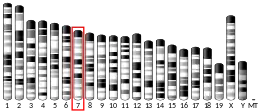| PTPN5 | |||||||||||||||||||||||||||||||||||||||||||||||||||
|---|---|---|---|---|---|---|---|---|---|---|---|---|---|---|---|---|---|---|---|---|---|---|---|---|---|---|---|---|---|---|---|---|---|---|---|---|---|---|---|---|---|---|---|---|---|---|---|---|---|---|---|
 | |||||||||||||||||||||||||||||||||||||||||||||||||||
| |||||||||||||||||||||||||||||||||||||||||||||||||||
| Identifiers | |||||||||||||||||||||||||||||||||||||||||||||||||||
| Aliases | PTPN5, PTPSTEP, STEP, STEP61, protein tyrosine phosphatase, non-receptor type 5, protein tyrosine phosphatase non-receptor type 5 | ||||||||||||||||||||||||||||||||||||||||||||||||||
| External IDs | OMIM: 176879 MGI: 97807 HomoloGene: 8423 GeneCards: PTPN5 | ||||||||||||||||||||||||||||||||||||||||||||||||||
| |||||||||||||||||||||||||||||||||||||||||||||||||||
| |||||||||||||||||||||||||||||||||||||||||||||||||||
| |||||||||||||||||||||||||||||||||||||||||||||||||||
| |||||||||||||||||||||||||||||||||||||||||||||||||||
| |||||||||||||||||||||||||||||||||||||||||||||||||||
| Wikidata | |||||||||||||||||||||||||||||||||||||||||||||||||||
| |||||||||||||||||||||||||||||||||||||||||||||||||||
Protein tyrosine phosphatase non-receptor type 5 is an enzyme that in humans is encoded by the PTPN5 gene.[5][6]
Protein tyrosine phosphatase (PTP), non-receptor type 5, also known as STEP (STriatal-Enriched protein tyrosine Phosphatase), was the first brain-specific PTP discovered.[5] The human STEP locus maps to chromosome 11p15.2-p15.1 and the murine STEP gene to chromosome 7B3-B5.[7] The single STEP gene is alternatively spliced to produce several isoforms,[8][9] the best characterized of which are the cytosolic STEP46 protein and the membrane-associated STEP61 protein.[10][11]
Substrates
Seven known targets of STEP have been identified as of 2015, including ERK1/2,[12][13] p38,[12] Fyn,[14] Pyk2,[15] PTPα,[16] and the glutamate receptor subunits GluN2B and GluA2.[17][18][19] STEP dephosphorylation of the kinases (ERK1/2, p38, Fyn, and Pyk2) occurs at a regulatory tyrosine within the kinase activation loop and leads to their inactivation. Dephosphorylation of a regulatory tyrosine on PTPα prevents the translocation of PTPα from the cytosol to lipid rafts, where it normally activates Fyn.[16] STEP thereby directly inactivates Fyn and also prevents the translocation of PTPα to compartments where it activates Fyn. STEP dephosphorylation of GluN2B and GluA2 leads to the internalization of NMDARs (GluN1/GluN2B) and AMPARs (GluA1/GluA2). Thus, one function of STEP is to oppose synaptic strengthening by inactivating kinases and internalizing receptors that are critical for the development of synaptic strengthening.
Clinical significance
STEP levels are disrupted in several diseases. Alzheimer’s disease (AD) was the first illness to be associated with elevated STEP expression both in human cortex and in several mouse models of AD.[17][20][19][21] STEP is also increased in fragile X syndrome,[22] schizophrenia,[23] and Parkinson’s disease.[24] In AD and FXS mouse models, genetic reduction of STEP expression reverses many of the cognitive and behavioral deficits.[22][19] Other laboratories have now shown that STEP activity is also reduced in several additional disorders. Thus, STEP levels or activity is decreased in Huntington’s disease,[25][26] cerebral ischemia,[27] alcohol abuse,[28][29][30] and stress disorders.[31][32] The emergent model suggests that an optimal level of STEP is required at synaptic sites, and that both high and low levels disrupt synaptic function.[33][34]
Inhibition
Several STEP inhibitors have now been discovered.[15][35] GlaxoSmithKline chose STEP as a new project for their Discovery Partnerships with Academia (DPAc) in 2014. This is a relatively new program in drug discovery and brings together the academic world with the drug discovery expertise of GSK to discover new inhibitors of validated targets.
- TC-2153[36]
References
- 1 2 3 GRCh38: Ensembl release 89: ENSG00000110786 - Ensembl, May 2017
- 1 2 3 GRCm38: Ensembl release 89: ENSMUSG00000030854 - Ensembl, May 2017
- ↑ "Human PubMed Reference:". National Center for Biotechnology Information, U.S. National Library of Medicine.
- ↑ "Mouse PubMed Reference:". National Center for Biotechnology Information, U.S. National Library of Medicine.
- 1 2 Lombroso PJ, Murdoch G, Lerner M (Aug 1991). "Molecular characterization of a protein-tyrosine-phosphatase enriched in striatum". Proceedings of the National Academy of Sciences of the United States of America. 88 (16): 7242–6. Bibcode:1991PNAS...88.7242L. doi:10.1073/pnas.88.16.7242. PMC 52270. PMID 1714595.
- ↑ "Entrez Gene: PTPN5 protein tyrosine phosphatase, non-receptor type 5 (striatum-enriched)".
- ↑ Li X, Luna J, Lombroso PJ, Francke U (Aug 1995). "Molecular cloning of the human homolog of a striatum-enriched phosphatase (STEP) gene and chromosomal mapping of the human and murine loci". Genomics. 28 (3): 442–9. doi:10.1006/geno.1995.1173. PMID 7490079.
- ↑ Sharma E, Zhao F, Bult A, Lombroso PJ (Aug 1995). "Identification of two alternatively spliced transcripts of STEP: a subfamily of brain-enriched protein tyrosine phosphatases". Brain Research. Molecular Brain Research. 32 (1): 87–93. doi:10.1016/0169-328x(95)00066-2. PMID 7494467.
- ↑ Bult A, Zhao F, Dirkx R, Sharma E, Lukacsi E, Solimena M, Naegele JR, Lombroso PJ (Dec 1996). "STEP61: a member of a family of brain-enriched PTPs is localized to the endoplasmic reticulum". The Journal of Neuroscience. 16 (24): 7821–31. doi:10.1523/JNEUROSCI.16-24-07821.1996. PMC 6579237. PMID 8987810.
- ↑ Lombroso PJ, Naegele JR, Sharma E, Lerner M (Jul 1993). "A protein tyrosine phosphatase expressed within dopaminoceptive neurons of the basal ganglia and related structures". The Journal of Neuroscience. 13 (7): 3064–74. doi:10.1523/JNEUROSCI.13-07-03064.1993. PMC 6576687. PMID 8331384.
- ↑ Boulanger LM, Lombroso PJ, Raghunathan A, During MJ, Wahle P, Naegele JR (Feb 1995). "Cellular and molecular characterization of a brain-enriched protein tyrosine phosphatase". The Journal of Neuroscience. 15 (2): 1532–44. doi:10.1523/JNEUROSCI.15-02-01532.1995. PMC 6577844. PMID 7869116.
- 1 2 Muñoz JJ, Tárrega C, Blanco-Aparicio C, Pulido R (May 2003). "Differential interaction of the tyrosine phosphatases PTP-SL, STEP and HePTP with the mitogen-activated protein kinases ERK1/2 and p38alpha is determined by a kinase specificity sequence and influenced by reducing agents". The Biochemical Journal. 372 (Pt 1): 193–201. doi:10.1042/BJ20021941. PMC 1223371. PMID 12583813.
- ↑ Paul S, Nairn AC, Wang P, Lombroso PJ (Jan 2003). "NMDA-mediated activation of the tyrosine phosphatase STEP regulates the duration of ERK signaling". Nature Neuroscience. 6 (1): 34–42. doi:10.1038/nn989. PMID 12483215. S2CID 32980653.
- ↑ Nguyen TH, Liu J, Lombroso PJ (Jul 2002). "Striatal enriched phosphatase 61 dephosphorylates Fyn at phosphotyrosine 420". The Journal of Biological Chemistry. 277 (27): 24274–9. doi:10.1074/jbc.M111683200. PMID 11983687.
- 1 2 Xu J, Chatterjee M, Baguley TD, Brouillette J, Kurup P, Ghosh D, Kanyo J, Zhang Y, Seyb K, Ononenyi C, Foscue E, Anderson GM, Gresack J, Cuny GD, Glicksman MA, Greengard P, Lam TT, Tautz L, Nairn AC, Ellman JA, Lombroso PJ (Aug 2014). "Inhibitor of the tyrosine phosphatase STEP reverses cognitive deficits in a mouse model of Alzheimer's disease". PLOS Biology. 12 (8): e1001923. doi:10.1371/journal.pbio.1001923. PMC 4122355. PMID 25093460.
- 1 2 Xu J, Kurup P, Foscue E, Lombroso PJ (May 2015). "STriatal-Enriched protein tyrosine Phosphatase (STEP) Regulates the PTPα/Fyn Signaling Pathway". Journal of Neurochemistry. 134 (4): 629–41. doi:10.1111/jnc.13160. PMC 4516628. PMID 25951993.
- 1 2 Snyder EM, Nong Y, Almeida CG, Paul S, Moran T, Choi EY, Nairn AC, Salter MW, Lombroso PJ, Gouras GK, Greengard P (Aug 2005). "Regulation of NMDA receptor trafficking by amyloid-beta". Nature Neuroscience. 8 (8): 1051–8. doi:10.1038/nn1503. PMID 16025111. S2CID 25182223.
- ↑ Xu J, Kurup P, Zhang Y, Goebel-Goody SM, Wu PH, Hawasli AH, Baum ML, Bibb JA, Lombroso PJ (Jul 2009). "Extrasynaptic NMDA receptors couple preferentially to excitotoxicity via calpain-mediated cleavage of STEP". The Journal of Neuroscience. 29 (29): 9330–43. doi:10.1523/JNEUROSCI.2212-09.2009. PMC 2737362. PMID 19625523.
- 1 2 3 Zhang Y, Kurup P, Xu J, Carty N, Fernandez SM, Nygaard HB, Pittenger C, Greengard P, Strittmatter SM, Nairn AC, Lombroso PJ (Nov 2010). "Genetic reduction of striatal-enriched tyrosine phosphatase (STEP) reverses cognitive and cellular deficits in an Alzheimer's disease mouse model". Proceedings of the National Academy of Sciences of the United States of America. 107 (44): 19014–9. Bibcode:2010PNAS..10719014Z. doi:10.1073/pnas.1013543107. PMC 2973892. PMID 20956308.
- ↑ Kurup P, Zhang Y, Xu J, Venkitaramani DV, Haroutunian V, Greengard P, Nairn AC, Lombroso PJ (Apr 2010). "Abeta-mediated NMDA receptor endocytosis in Alzheimer's disease involves ubiquitination of the tyrosine phosphatase STEP61". The Journal of Neuroscience. 30 (17): 5948–57. doi:10.1523/JNEUROSCI.0157-10.2010. PMC 2868326. PMID 20427654.
- ↑ Zhang Y, Kurup P, Xu J, Anderson GM, Greengard P, Nairn AC, Lombroso PJ (Nov 2011). "Reduced levels of the tyrosine phosphatase STEP block β amyloid-mediated GluA1/GluA2 receptor internalization". Journal of Neurochemistry. 119 (3): 664–72. doi:10.1111/j.1471-4159.2011.07450.x. PMC 3192910. PMID 21883219.
- 1 2 Goebel-Goody SM, Wilson-Wallis ED, Royston S, Tagliatela SM, Naegele JR, Lombroso PJ (Jul 2012). "Genetic manipulation of STEP reverses behavioral abnormalities in a fragile X syndrome mouse model". Genes, Brain and Behavior. 11 (5): 586–600. doi:10.1111/j.1601-183X.2012.00781.x. PMC 3922131. PMID 22405502.
- ↑ Carty NC, Xu J, Kurup P, Brouillette J, Goebel-Goody SM, Austin DR, Yuan P, Chen G, Correa PR, Haroutunian V, Pittenger C, Lombroso PJ (2012). "The tyrosine phosphatase STEP: implications in schizophrenia and the molecular mechanism underlying antipsychotic medications". Translational Psychiatry. 2 (7): e137. doi:10.1038/tp.2012.63. PMC 3410627. PMID 22781170.
- ↑ Kurup PK, Xu J, Videira RA, Ononenyi C, Baltazar G, Lombroso PJ, Nairn AC (Jan 2015). "STEP61 is a substrate of the E3 ligase parkin and is upregulated in Parkinson's disease". Proceedings of the National Academy of Sciences of the United States of America. 112 (4): 1202–7. Bibcode:2015PNAS..112.1202K. doi:10.1073/pnas.1417423112. PMC 4313846. PMID 25583483.
- ↑ Saavedra A, Giralt A, Rué L, Xifró X, Xu J, Ortega Z, Lucas JJ, Lombroso PJ, Alberch J, Pérez-Navarro E (Jun 2011). "Striatal-enriched protein tyrosine phosphatase expression and activity in Huntington's disease: a STEP in the resistance to excitotoxicity". The Journal of Neuroscience. 31 (22): 8150–62. doi:10.1523/JNEUROSCI.3446-10.2011. PMC 3472648. PMID 21632937.
- ↑ Gladding CM, Sepers MD, Xu J, Zhang LY, Milnerwood AJ, Lombroso PJ, Raymond LA (Sep 2012). "Calpain and STriatal-Enriched protein tyrosine phosphatase (STEP) activation contribute to extrasynaptic NMDA receptor localization in a Huntington's disease mouse model". Human Molecular Genetics. 21 (17): 3739–52. doi:10.1093/hmg/dds154. PMC 3412376. PMID 22523092.
- ↑ Deb I, Manhas N, Poddar R, Rajagopal S, Allan AM, Lombroso PJ, Rosenberg GA, Candelario-Jalil E, Paul S (Nov 2013). "Neuroprotective role of a brain-enriched tyrosine phosphatase, STEP, in focal cerebral ischemia". The Journal of Neuroscience. 33 (45): 17814–26. doi:10.1523/JNEUROSCI.2346-12.2013. PMC 3818554. PMID 24198371.
- ↑ Hicklin TR, Wu PH, Radcliffe RA, Freund RK, Goebel-Goody SM, Correa PR, Proctor WR, Lombroso PJ, Browning MD (Apr 2011). "Alcohol inhibition of the NMDA receptor function, long-term potentiation, and fear learning requires striatal-enriched protein tyrosine phosphatase". Proceedings of the National Academy of Sciences of the United States of America. 108 (16): 6650–5. Bibcode:2011PNAS..108.6650H. doi:10.1073/pnas.1017856108. PMC 3081035. PMID 21464302.
- ↑ Darcq E, Hamida SB, Wu S, Phamluong K, Kharazia V, Xu J, Lombroso P, Ron D (Jun 2014). "Inhibition of striatal-enriched tyrosine phosphatase 61 in the dorsomedial striatum is sufficient to increased ethanol consumption". Journal of Neurochemistry. 129 (6): 1024–34. doi:10.1111/jnc.12701. PMC 4055745. PMID 24588427.
- ↑ Legastelois, R; Darcq, E; Wegner, S. A.; Lombroso, P. J.; Ron, D (2015). "Striatal-Enriched Protein Tyrosine Phosphatase Controls Responses to Aversive Stimuli: Implication for Ethanol Drinking". PLOS ONE. 10 (5): e0127408. Bibcode:2015PLoSO..1027408L. doi:10.1371/journal.pone.0127408. PMC 4438985. PMID 25992601.
- ↑ Yang CH, Huang CC, Hsu KS (May 2012). "A critical role for protein tyrosine phosphatase nonreceptor type 5 in determining individual susceptibility to develop stress-related cognitive and morphological changes". The Journal of Neuroscience. 32 (22): 7550–62. doi:10.1523/JNEUROSCI.5902-11.2012. PMC 6703597. PMID 22649233.
- ↑ Dabrowska J, Hazra R, Guo JD, Li C, Dewitt S, Xu J, Lombroso PJ, Rainnie DG (Dec 2013). "Striatal-enriched protein tyrosine phosphatase-STEPs toward understanding chronic stress-induced activation of corticotrophin releasing factor neurons in the rat bed nucleus of the stria terminalis". Biological Psychiatry. 74 (11): 817–26. doi:10.1016/j.biopsych.2013.07.032. PMC 3818357. PMID 24012328.
- ↑ Goebel-Goody SM, Baum M, Paspalas CD, Fernandez SM, Carty NC, Kurup P, Lombroso PJ (Jan 2012). "Therapeutic implications for striatal-enriched protein tyrosine phosphatase (STEP) in neuropsychiatric disorders". Pharmacological Reviews. 64 (1): 65–87. doi:10.1124/pr.110.003053. PMC 3250079. PMID 22090472.
- ↑ Karasawa T, Lombroso PJ (Dec 2014). "Disruption of striatal-enriched protein tyrosine phosphatase (STEP) function in neuropsychiatric disorders". Neuroscience Research. 89: 1–9. doi:10.1016/j.neures.2014.08.018. PMC 4259835. PMID 25218562.
- ↑ Baguley TD, Xu HC, Chatterjee M, Nairn AC, Lombroso PJ, Ellman JA (Oct 2013). "Substrate-based fragment identification for the development of selective, nonpeptidic inhibitors of striatal-enriched protein tyrosine phosphatase". Journal of Medicinal Chemistry. 56 (19): 7636–50. doi:10.1021/jm401037h. PMC 3875168. PMID 24083656.
- ↑ Baguley TD, Nairn AC, Lombroso PJ, Ellman JA (March 2015). "Synthesis of benzopentathiepin analogs and their evaluation as inhibitors of the phosphatase STEP". Bioorg. Med. Chem. Lett. 25 (5): 1044–6. doi:10.1016/j.bmcl.2015.01.020. PMC 4334692. PMID 25666825.
Further reading
- Kanamaru H, Asahina K (Oct 1990). "[Venous aneurysm of V. saphena accessoria--a case report]". Nihon Geka Gakkai Zasshi. 91 (10): 1648–51. PMID 2263249.
- Li X, Luna J, Lombroso PJ, Francke U (Aug 1995). "Molecular cloning of the human homolog of a striatum-enriched phosphatase (STEP) gene and chromosomal mapping of the human and murine loci". Genomics. 28 (3): 442–9. doi:10.1006/geno.1995.1173. PMID 7490079.
- Yoneya T, Yamada Y, Kakeda M, Osawa M, Arai E, Hayashi K, Nishi N, Inoue H, Nishikawa M (Jul 1997). "Molecular cloning of a novel receptor-type protein tyrosine phosphatase from murine fetal liver". Gene. 194 (2): 241–7. doi:10.1016/S0378-1119(97)00174-1. PMID 9272866.
- Pulido R, Zúñiga A, Ullrich A (Dec 1998). "PTP-SL and STEP protein tyrosine phosphatases regulate the activation of the extracellular signal-regulated kinases ERK1 and ERK2 by association through a kinase interaction motif". The EMBO Journal. 17 (24): 7337–50. doi:10.1093/emboj/17.24.7337. PMC 1171079. PMID 9857190.
- Nguyen TH, Liu J, Lombroso PJ (Jul 2002). "Striatal enriched phosphatase 61 dephosphorylates Fyn at phosphotyrosine 420". The Journal of Biological Chemistry. 277 (27): 24274–9. doi:10.1074/jbc.M111683200. PMID 11983687.
- Eswaran J, von Kries JP, Marsden B, Longman E, Debreczeni JE, Ugochukwu E, Turnbull A, Lee WH, Knapp S, Barr AJ (May 2006). "Crystal structures and inhibitor identification for PTPN5, PTPRR and PTPN7: a family of human MAPK-specific protein tyrosine phosphatases". The Biochemical Journal. 395 (3): 483–91. doi:10.1042/BJ20051931. PMC 1462698. PMID 16441242.






